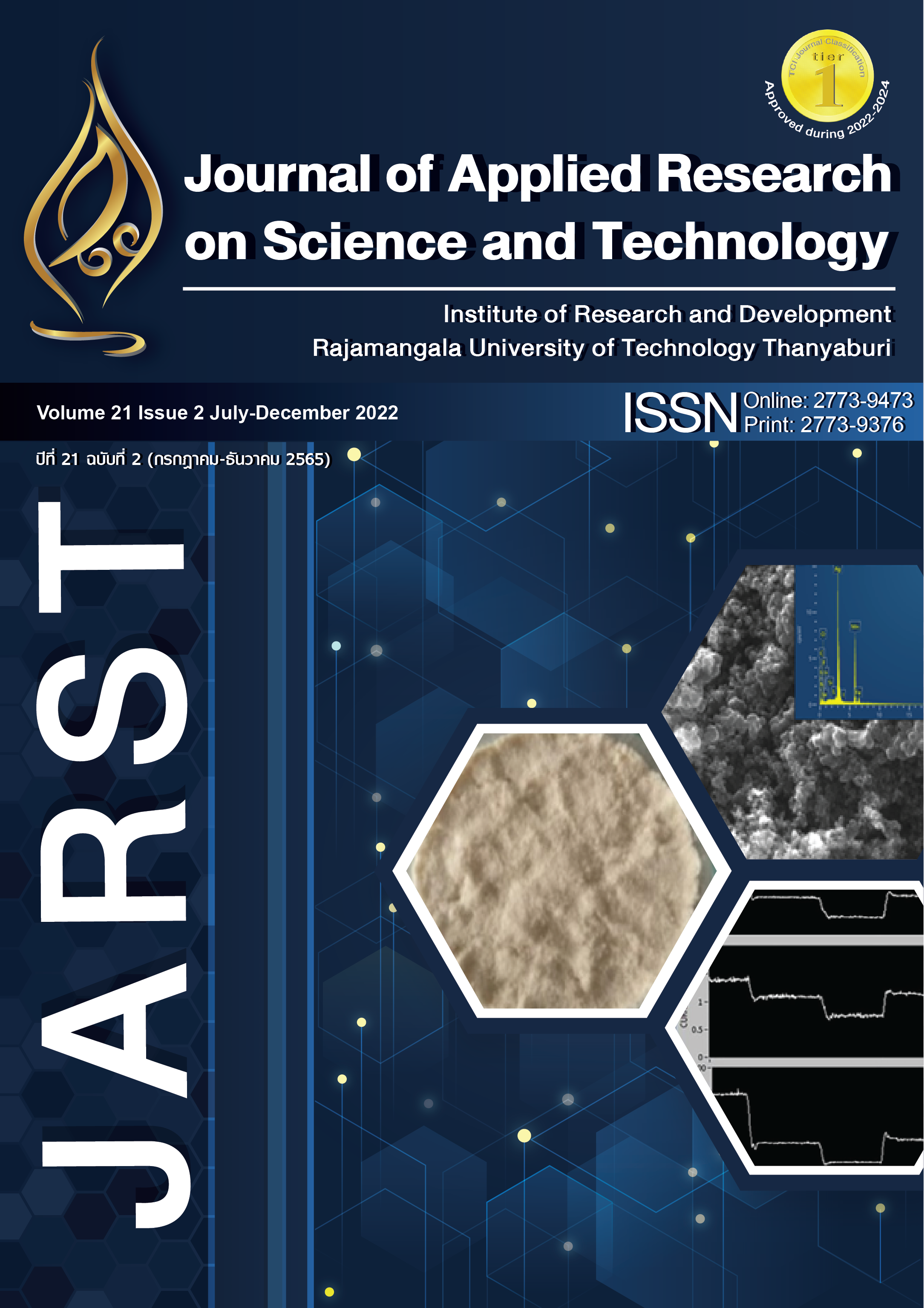A Study of Running Stability Parameters of Infrastructure Maintenance Vehicle for Commuter Rail with Scale Model
Main Article Content
Abstract
It is important to understand the dynamic behavior of the vehicle’s wheelset and the values used to assess its running stability when an increase in the speed of an infrastructure maintenance vehicle for commuter rail is required. This article presents a guideline for measuring the vehicle's performance, emphasizing the wheelset variables, including lateral displacement, yawing, and acceleration. This research was divided into three sections: an application of the theories related to wheelset motion, a synthesis of the standard on rolling stock equipment for shock and vibration, and an experimental result from a 1/6 scale model of the infrastructure maintenance vehicle created to mimic the behavior of the real vehicle with a maximum running speed of 60 km/hr. The study found that when using the parameters of a track gauge of 1 m and a nominal wheel radius of 380 mm, the values of wheelset lateral displacements, if running on a straight line and curve, shall not exceed 10 mm, 19 mm, respectively, and the average lateral accelerations of the bogie and the wheelset are 37, 270 m/s2, respectively. From the experimental results of the 1/6 scale model running on a roller rig at the maximum speed, it was found that the yaw angle shall not exceed 1.72 degrees, and the average lateral acceleration of the wheelset was four times higher than that of the standard value. This could be caused by the maximum running speed of the scale model at 34.9 km/hr which is much lower than that of infrastructure maintenance vehicle at 60 km/hr.
Article Details

This work is licensed under a Creative Commons Attribution-NonCommercial-NoDerivatives 4.0 International License.
References
Garg VK, Dukkipati RV. Dynamics of Railway Vehicle Systems. 1st Edition. Cambridge: Academic Press. September 1984.
Promla S. Requirement for Red-Line Commuter Rail System Project. Paper presented at: Train Performance Calculation and Design Meeting; 21 Mar 24; Faculty of Engineering, Rajamangala University of Technology Thanyaburi, Thailand.
Ahmadian M, Yang S. Effect nonlinearities on locomotive bogie hunting stability. Vehicle System Dynamics.International Journal of Vehicle Mechanics and Mobility. 1998;29(6):365-84.
Siwakosit W. Principle of Railway Engineering. 2nd Edition. Bangkok: Kasetsart University Press. 2020.
Iwniki S. Handbook of Railway Vehicle Dynamics 1st Edition. Boca Raton: CRC Press; 2006.
CENELEC. Railway applications - Rolling stock equipment - Shock and vibration tests. BS EN 61373. Brussels: British Standard; 2010.
Matej J, Seńko J, Awrejcewicz J. Dynamic properties of two-axle freight wagon with UIC double-link suspension as a non-smooth system with dry friction. Applied Non-Linear Dynamical Systems Springer Proceedings in Mathematics & Statistics. 2014;93:255-68.
Gretzschel M, Jaschinski A. Design of an active wheelset on a scaled roller rig. Vehicle System Dynamics. 2004;41(5):365-81.
Siahkouhi M, Dadgostar Y, Jing G. Investigation of lateral displacement of the train due to passing from nose rail of high speed turnout. 7th International Conference on Recent Advances in Railway Engineering. Tehran-Iran. 2021.
Visayataksin N, Sooklamai M. Railway bogie vibration analysis by mathematical simulation model and a scaled four-wheel railway bogie set. IOP Conference Series: Materials Science and Engineering. 2018.


